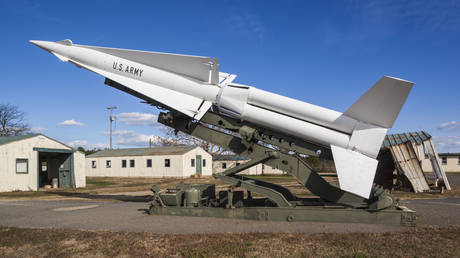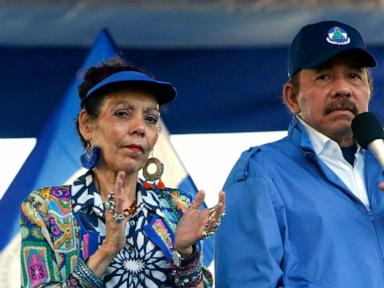ARTICLE AD BOX
Jamie Dettmer is opinion editor and a foreign affairs columnist at POLITICO Europe.
When U.S. President Donald Trump unveiled his 20-point Gaza peace plan, diplomats and commentators noted echoes of another deal former British Prime Minister Tony Blair had a hand in — the Good Friday Agreement. It was this landmark document, signed in 1998, that started the process that would end three decades of sectarian strife in Northern Ireland, known as the Troubles.
The similarities between the two immediately struck academic David Mitchell, a Trinity College professor of reconciliation and peace studies. Several phrases appeared to be “lifted from the Good Friday Agreement — or at least inspired by it,” he told POLITICO, particularly those about a “process of demilitarization,” the “decommissioning” of weapons and “placing weapons permanently beyond use.”
According to Mitchell, “the word ‘decommissioning’ wasn’t much in use until the Good Friday Agreement; people hadn’t really heard it before. I guess [it] was to try to take the sting out of disarmament, and maybe make it look less like a defeat for the paramilitaries.” No doubt this approach helped the Irish Republican Army’s pro-agreement camp eventually sell the landmark deal to the movement’s reluctant hard men.
Nonetheless, it took nearly nine years to get Northern Ireland’s IRA to fully disarm and bring the conflict, which saw around 3,500 killed and 50,000 injured, to an end. So how long before Hamas disarms?
The fact that the Good Friday Agreement — some of its core assumptions and the overall design of its confidence-building steps — served as a model for Gaza is hardly surprising. After all, Trump tapped Blair to help oversee postwar Gaza’s governance. The former prime minister also worked on the plan during the last six months of the previous U.S. administration, and subsequently with Trump’s son-in-law Jared Kushner and Special Envoy Steve Witkoff when it was revived by the current administration.
And as it was in Northern Ireland, disarmament is shaping up to be the Gaza plan’s most likely stumbling stone, particularly as it moves from its fairly simple transactional first phase of hostage–prisoner swaps and the cessation of hostilities to its second phase, which will see Hamas and allied Palestinian militant groups in the enclave lay down their arms.
Phase three — if we ever get there — envisions the reconstruction of civil governance and the rebuilding of Gaza, which will of course take years. But so too will disarmament — if what unfolded in Northern Ireland is a guide.
On Tuesday, after Hamas was accused of launching an attack on Israeli forces in the Rafah area, an impatient Trump warned the group to disarm or face a “FAST, FURIOUS, & BRUTAL!” end. But so far, the only disarmament that has taken place involves a family-based clan in Khan Yunis handing over its weapons to Hamas, as the militant group began a campaign of violence against clan-based opponents and Gazans it claims collaborated with Israel during the war.
The main lesson from the Northern Ireland peace process, which came close to unraveling several times over disarmament, is that even with the strongest will in the world, it’s going to take considerable time — something that will give the deal’s opponents, whether Israeli or Palestinian, plenty of opportunity to throw a spanner in the works.
The Good Friday Agreement was among Blair’s finest moments, and one he proudly argues remains an example to the world: “You had leaders who were prepared even at personal political risk to face down the recalcitrant elements in their own parties and move forwards,” he said on the 25th anniversary of its signing. “That’s why it’s a lesson for peace processes everywhere.”
And moving forward, Blair will no doubt remind us that patience will be vital — something U.S. Vice President JD Vance already hinted at during his remarks in Israel on Tuesday. While echoing Trump and warning that “if Hamas does not co-operate, it will be obliterated,” Vance also stressed it would take “a very, very long time” to implement the 20-point plan and declined to set a deadline or timetable for Hamas to disarm.
Drawing further parallels, Mitchell observed that after the Good Friday Agreement was signed, “decommissioning was immediately the most important issue.” It “dominated the whole peace process until 2007 and took on massive symbolic importance. There was some devolution and power-sharing, but it kept collapsing because Unionists didn’t have confidence [in] the IRA’s seriousness about disarmament,” he said.
 Hamas claims it has redeployed its gunmen only to ensure the enclave doesn’t plunge into anarchy. | Bashar Taleb/AFP via Getty Images
Hamas claims it has redeployed its gunmen only to ensure the enclave doesn’t plunge into anarchy. | Bashar Taleb/AFP via Getty Images“As a militant group, your weapons are absolutely essential to your identity, which I assume is the case with Hamas. So, you don’t want to give them up lightly,” he added.
Indeed, not.
Once the ceasefire took effect, Hamas wasted no time, openly reappearing in areas the Israel Defense Forces (IDF) had just vacated and reasserting control over a chunk of the enclave. One Hamas officer told Qatar’s Al-Araby TV that redeployed gunmen would confiscate weapons from “fugitives” — a catch-all term for Palestinians opposing the group. And not long after, a video posted on Gaza-based social media networks showed an armed masked man shooting a Palestinian in the leg — a punishment often used by the militants against suspected collaborators. There have been more such shootings and executions since.
Hamas claims it has redeployed its gunmen only to ensure the enclave doesn’t plunge into anarchy. But when it comes to eventual disarmament, it has only issued opaque statements, with a senior Hamas official telling Reuters earlier this week that he couldn’t commit to the group’s disarming.
Asked if Hamas would lay down its arms, a member of the group’s politburo, Mohammed Nazzal, said: “I can’t answer with a yes or no. Frankly, it depends on the nature of the project. The disarmament project you’re talking about, what does it mean? To whom will the weapons be handed over?”
He has a point: When it comes to the mechanics of decommissioning weapons, nothing is in place yet; there’s no one to receive them or monitor their destruction.
Hamas is hardly going to hand over its arms to the IDF — much as the IRA didn’t hand theirs to the British army or the province’s police force, then known as the Royal Ulster Constabulary — as it would certainly get pushback from the hard men. Instead, Mitchell explained, it was two churchmen, a Methodist and a Catholic, who monitored the IRA destroying its weapons caches.
“Basically, they were driven around the countryside inspecting the destruction of the weapons. It was all very secretive. Then they came back to the media and said: ‘We have seen the full and complete disarmament of the IRA.” Those arsenals were much smaller, though, and it’s difficult to imagine the likes of Israel’s National Security Minister Itamar Ben-Gvir or Finance Minister Bezalel Smotrich agreeing to such a stealthy process, taking the word of a pair of independent monitors that weapons have been placed beyond use. They will want total evidence and will be keen to rub Hamas’ nose in defeat.
The most obvious solution here is for Hamas to hand its weapons over to an international stabilization force, which Vance said is still in the early stages of planning. He did not, however, directly link the actual mechanics of Hamas’ disarmament with the deployment of a stabilization force.
That begs the question of Hamas’ intentions — including whether there’s a single chain of command or if splits will emerge within the militant group. “Is Hamas going to give up the weapons? Are they going to give up power? Even in recent days, we’ve seen that militants in Gaza aren’t entirely a monolith. To what extent does Hamas have operational control over all these elements?” asked Ned Price, a former U.S. diplomat who had worked with Blair and former Secretary of State Antony Blinken on the peace plan during the previous administration.
For Mitchell, there’s one huge difference between the Good Friday Agreement and the Gaza plan: The former had the carrot of a political settlement, whereas Trump’s plan has no clear path to a two-state solution. “Northern Ireland’s peace process was linked with political progress, whereas in this agreement, there’s no linkage,” he said.
That might prove to be the fatal flaw.
.png)
 3 hours ago
1
3 hours ago
1








 English (US)
English (US)